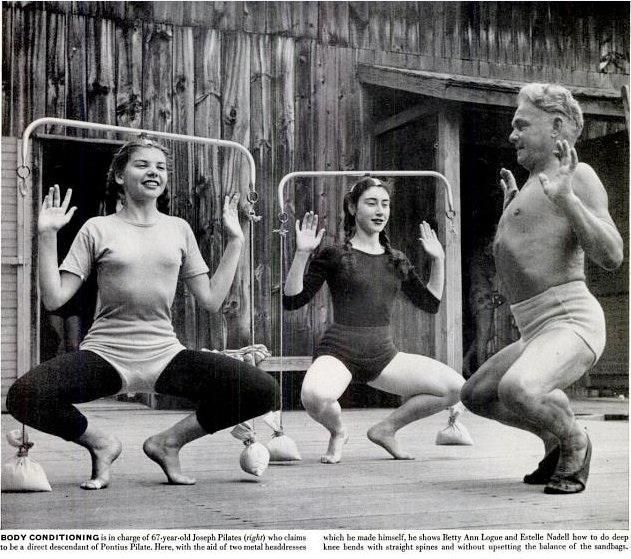I was trained by the protege of Joseph Pilates, Romana Kryzanowska. It was always a delight to hear of the stories she related to her groups of apprenticing teachers. These stories, we’re often randomly passed on, during impromptu speeches, where we trained in Drago’s Gym (now known as True Pilates). Sometimes, Romana would join us as we had a quick bite of lunch before she left for the day. These stories were fascinating as well as informative. One story, which we heard time and again was that Joe had a deep yearning to be recognized and accepted by the medical community with respect to the unforeseen beneficial effects that his training modules could have on the population. Sadly, he never lived to actually hear these accolades. However, medical professionals now hail Pilates and recognize the benefits that stretching and alignment of the spine can provide to the lives of those it touches.
Pilates combines the best disciplines of the East and the West. And even within those parameters, the training of Pilates instructors can be as different as night and day. There are teachers that turn the exercises into a regiment of power and continuous “scooping” out the abdominals. And then there are those teachers that prefer to teach the breathing and relaxation of the exercises. And somewhere in between lies the crux or “core” of Pilates training. Joseph Pilates always had a model of a skeleton and sketches of the human body in his studios. His basic principle of teaching was that you couldn’t maintain your health without moving the energy in the body. The Chinese have been practicing this belief as far back as 500 years. They have always believed that finding your balance and center would bring about health because it moved energy.
Hundreds of people can be seen practicing Tai Chi in the parks of China in the wee hours of morning. It is believed that the dew has a purifying effect and better to breathe in before traffic becomes congested and the exhausts from cars fill the air. The purest form of meditation through movement is Qi Gong…a calisthenic meditation through perfect balance. It is a powerful type of movement and requires focus and intense concentration. Joseph Pilates required the same for his students and often told clients to leave his gym if they did not show enough focus to the work. This, of course, might be only a folklore tidbit, but one that was told to me by one of my instructors. What does remain true was that the Chinese believed that your thoughts and emotions could change a person’s health. They felt that the chi or energy had to move through the correct channels or meridians of the body. In order to accomplish that, the teacher would have to “feel” it as an artist in order to describe it to the student. The teacher would have to be able to draw this feeling on paper in ink similar to calligraphy. The strokes might change from bold to very fine ones with flourishes of the hand. This required intense concentration and illustrated the yin and yang of movements that would later be taught to the student in their practice sessions. There were to be no breaks in these movements for as one movement ended, another would begin.
The Chinese believe that we are all born in a perfect balanced state and then we fall out of that state. Finding the balance of this perfect state is the quest and the only quest. Everything consists of balance and the master teachers of Tai Chi have a saying…”a teacher for one day is like a parent for a lifetime.” Is there a reason why some people die at a young age and others live longer? Is there a reason to how they think or feel that plays a difference? It might have something to do with the balance of perfect thoughts or balanced chi in their bodies. A rather simplistic analogy is that of the chi being like a hinge on a door. If it doesn’t swing freely, it can rust.
Acupuncture clinics try to help rid people of pain by finding pressure points and balancing the body’s stress and overload. They have studied the maps and routes of these pathways and can pinpoint these areas with needles applied under the skin. It is only through great patience and skill, perseverance and practice can the correct “pull back” of the underlying tissue be felt when the needle is inserted. I know from personal experience, how amazing this procedure can benefit someone and the symptoms of pain are reduced or eliminated.
When someone can breathe and relax, the chi can be found and the symptoms of pain can be reduced. In the training of Pilates, the breathing can be very important for it defines the lift of the ribcage off the pelvis. The chi is described as a ball that begins below or under the navel (in or near the pelvis). I know Joe Pilates was onto something far before we caught on to his revelation and the importance of his work. It was so much more than just fitness and exercise. It was a way to heal the body without medicine being the “only” cure available.
